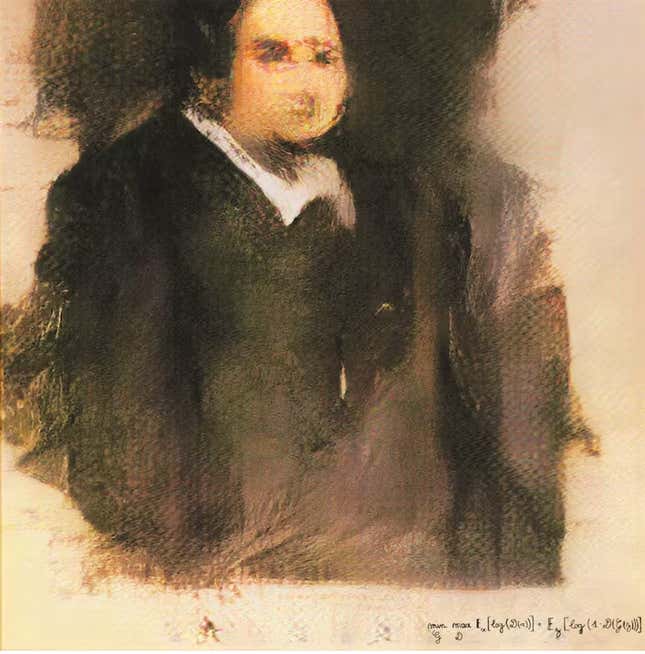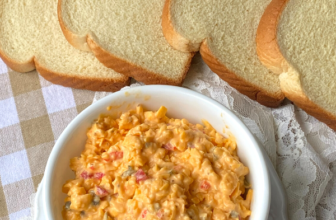
Chloe Preece, ESCP Business School and Hafize Çelik, University of Bath
Is computational creativity attainable? The current hype round generative synthetic intelligence (AI) instruments equivalent to ChatGPT, Midjourney, Dall-E and plenty of others, raises new questions on whether or not creativity is a uniquely human ability. Some current and memorable milestones of generative AI foster this query:
- An AI art work, The Portrait of Edmond de Belamy, offered for $432,500, almost 45 instances its excessive estimate, by the public sale home Christie’s in 2018. The art work was created by a generative adversarial community that was fed an information set of 15,000 portraits overlaying six centuries.
- Music producers equivalent to Grammy-nominee Alex Da Child, have collaborated with AI (on this case IBM’s Watson) to churn out hits and inform their artistic course of.
Within the circumstances above, a human remains to be on the helm, curating the AI’s output in keeping with their very own imaginative and prescient and thereby retaining the authorship of the piece. But, AI picture generator Dall-E, for instance, can produce novel output on any theme you would like inside seconds. By diffusion, whereby enormous datasets are scraped collectively to coach the AI, generative AI instruments can now transpose written phrases into novel footage or improvise music within the type of any composer, devising new content material that resembles the coaching knowledge however isn’t equivalent. Authorship on this case is maybe extra advanced. Is it the algorithm? The 1000’s of artists whose work has been scraped to provide the picture? The prompter who efficiently describes the type, reference, material, lighting, standpoint and even emotion evoked? To reply these questions, we should return to an age-old query.
What’s creativity?
In line with Margaret Boden, there are three varieties of creativity: combinational, exploratory, and transformational creativity. Combinational creativity combines acquainted concepts collectively. Exploratory creativity generates new concepts by exploring ‘structured conceptual areas,’ that’s, tweaking an accepted type of considering by exploring its contents, boundaries and potential. Each of these kind of creativity should not 1,000,000 miles from generative AI’s algorithmic manufacturing of artwork; creating novel works in the identical type as thousands and thousands of others within the coaching knowledge, a ‘artificial creativity.’ Transformational creativity, nevertheless, means producing concepts past current constructions and kinds to create one thing completely authentic; that is on the coronary heart of present debates round AI by way of honest use and copyright – very a lot unchartered authorized waters, so we must wait and see what the courts resolve.
The important thing attribute of AI’s artistic processes is that the present computational creativity is systematic, not impulsive, as its human counterpart can usually be. It’s programmed to course of info in a sure strategy to obtain explicit outcomes predictably, albeit in usually surprising methods. Actually, that is maybe essentially the most important distinction between artists and AI: whereas artists are self- and product-driven, AI may be very a lot consumer-centric and market-driven – we solely get the artwork we ask for, which isn’t maybe, what we’d like.
To date, generative AI appears to work greatest with human companions and, maybe then, the artificial creativity of the AI is a catalyst to push our human creativity, augmenting human creativity slightly than producing it. As is commonly the case, the hype round these instruments as disruptive forces outstrips the truth. Actually, artwork historical past reveals us that know-how has hardly ever instantly displaced people from work they needed to do. Consider the digital camera, for instance, which was feared as a result of its energy to place portrait painters out of enterprise. What are the enterprise implications for using artificial creativity by AI, then?
Artificial artwork for enterprise
Artificial creativity on demand, as at present generated by AI, is definitely a boon to enterprise and advertising. Latest examples embody:
The potential use situations are infinite and what they require is one other type of creativity: curation. AI has been recognized to ‘hallucinate’ – an business time period for spewing nonsense – and the decidedly human ability required is in sense-making, that’s expressing ideas, concepts and truths, slightly than simply one thing that’s pleasing to the senses. Curation is due to this fact wanted to pick out and body, or reframe, a unified and compelling imaginative and prescient.
Need to know extra about AI, chatbots, and the way forward for machine studying? Take a look at our full protection of artificial intelligence, or browse our guides to The Best Free AI Art Generators and Everything We Know About OpenAI’s ChatGPT.
Chloe Preece, Affiliate Professor in Advertising, ESCP Business School and Hafize Çelik, PhD candidate in administration, University of Bath
This text is republished from The Conversation underneath a Artistic Commons license. Learn the original article.
Trending Merchandise

Cooler Master MasterBox Q300L Micro-ATX Tower with Magnetic Design Dust Filter, Transparent Acrylic Side Panel…

ASUS TUF Gaming GT301 ZAKU II Edition ATX mid-Tower Compact case with Tempered Glass Side Panel, Honeycomb Front Panel…

ASUS TUF Gaming GT501 Mid-Tower Computer Case for up to EATX Motherboards with USB 3.0 Front Panel Cases GT501/GRY/WITH…

be quiet! Pure Base 500DX Black, Mid Tower ATX case, ARGB, 3 pre-installed Pure Wings 2, BGW37, tempered glass window

ASUS ROG Strix Helios GX601 White Edition RGB Mid-Tower Computer Case for ATX/EATX Motherboards with tempered glass…










